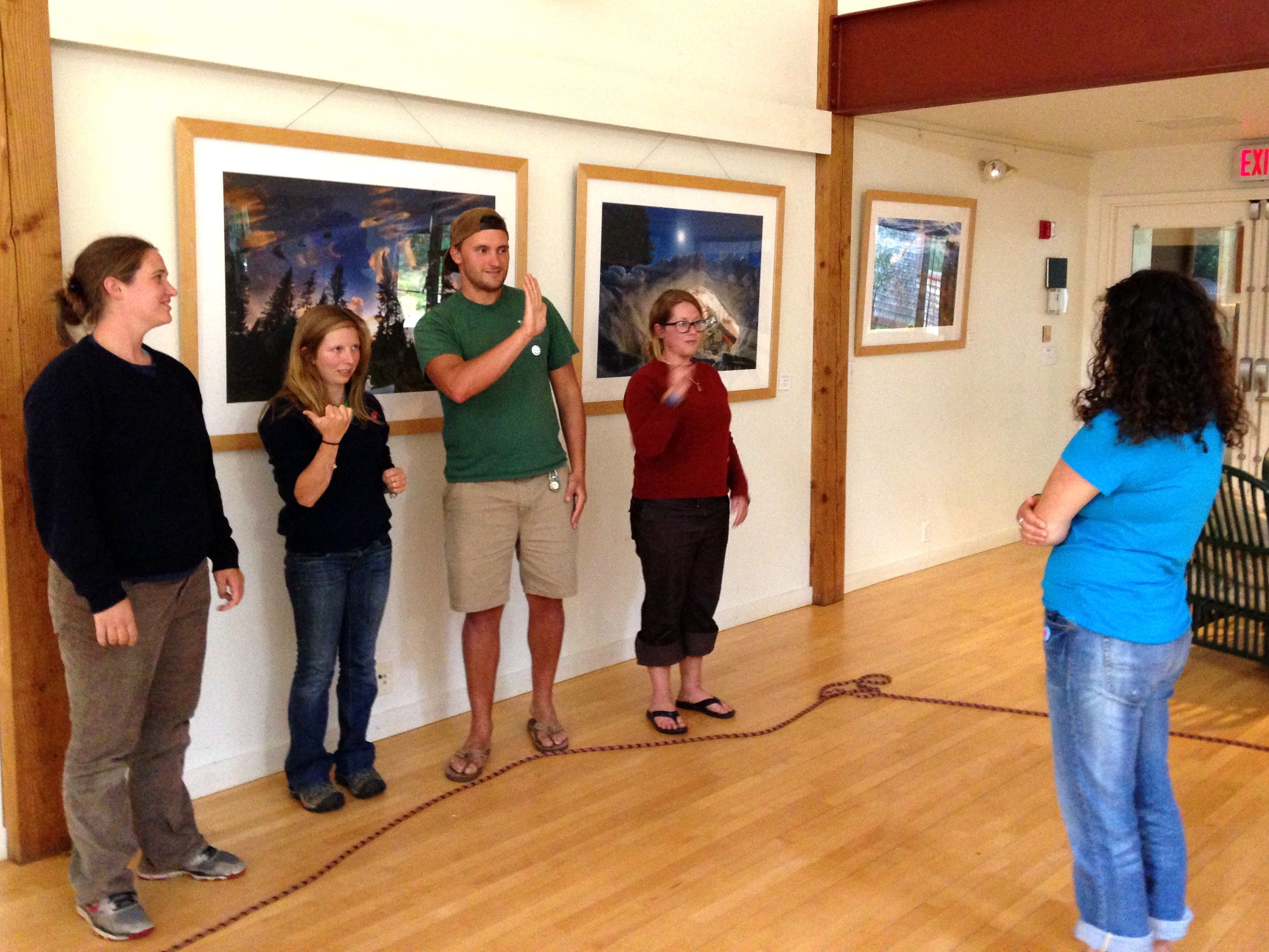
Oct 17, 2013 Communication Focused Activities Part Three
Earlier this week I shared some of my favorite activities to spark reflection and conversation around effective communication. In my last two posts I offered activities that blend communication practice and reflection, with group building and problem solving including “Telegraph”, “Tin Can Pass”, “Postcard Consensus”, and “Zoom” (see Oct 12th and October 13th posts).
In today’s post, I offer another activity that is useful for exploring how complicated communication can be, and how miscommunication arises. This activity is sure to initiate meaningful reflection and dialogue within your groups.
Communication Break Down
This activity involves multiple “lines of communication” with some participants limited to verbal only communication, some to non-verbal, and a person who has to respond to directions through these multiple modalities. This is a great way to illustrate how challenging giving, receiving and interpreting directions can be.
Purpose: communication, dealing with frustration, giving and receiving directions
Directions:
- The group is divided into 3 “lines of communication” which include four participants at the front of the room (line #1 non-verbal directors), a single person facing them (line #2 verbal director), and a third person placed behind them all who is the doer (line #3 the doer). The doer is challenged to complete a simple task with directions from the others.
- Line #1/Non-Verbal Directors: Four participants are placed in the front of the room; they can see the task at hand and all of the participants involved, but cannot talk. They are only allowed to use non-verbal communication with the person in line #2 who is the verbal direction giver.
- Line #2/Verbal Director: A single person is placed facing the group of four non-verbal direction givers. This verbal direction giver watches the first line of four participants but has their back to the “doer” who is placed behind them. This verbal director can talk, but cannot see what the “doer” is “doing”.
- Line #3/Doer: This person in line #3 is the “doer”. They have their eyes closed and are placed a few feet behind the other two groups. This person will complete a simple task based on the directions the group gives them, which will be interpreted by the person in line #2 the verbal director.
- The rest of the group comes up with a simple task using basic props such as moving a ball onto a chair or into a can, or moving a book from a chair to inside a desk.
- The group not involved in directing is responsible for spotting the “doer” participant as they complete the task so they don’t bump into anything.
- The task is shown to line #1 the non-verbal directors. The group in line #1 tries to non-verbally explain the task to the person in line #2 so they can explain the task verbally to person #3 the doer.
- The rest of the group spots person #3 as they complete the task but they don’t interfere.
Outcomes/Reflection:This activity generates laughter and meaningful discussion around communication (and communication break downs) in the workplace or classroom.
Reference: This is a variation of a community building challenge I first learned from my colleague Johanna Liskowsky-Doak. There are many “Lines of Communication” activities used by various educators in the team-building field.



No Comments